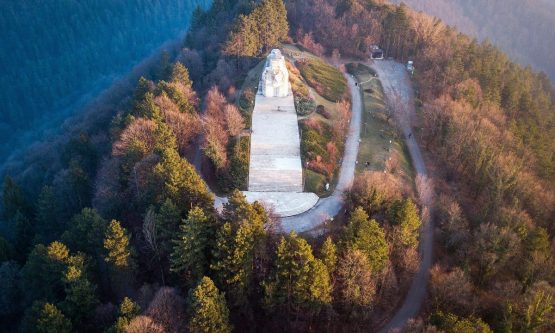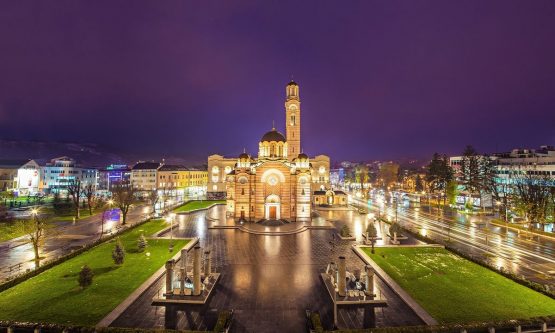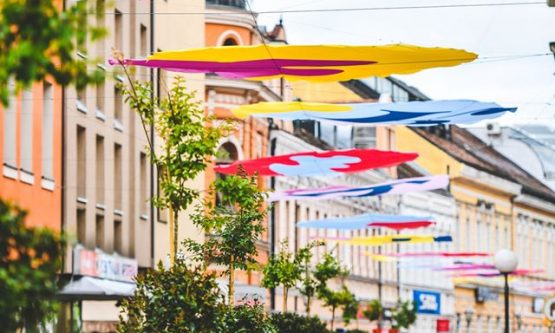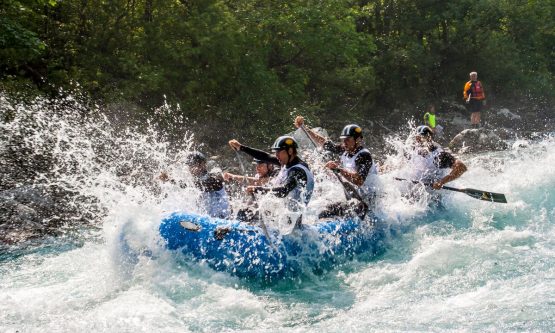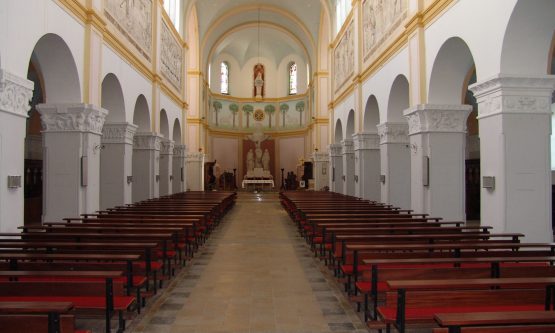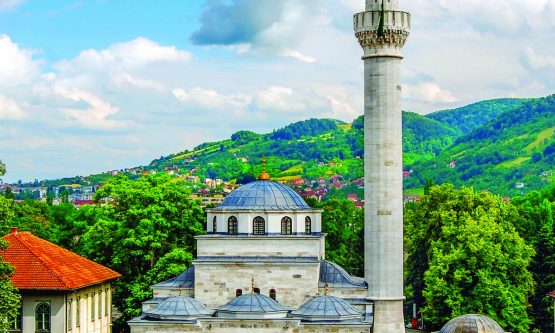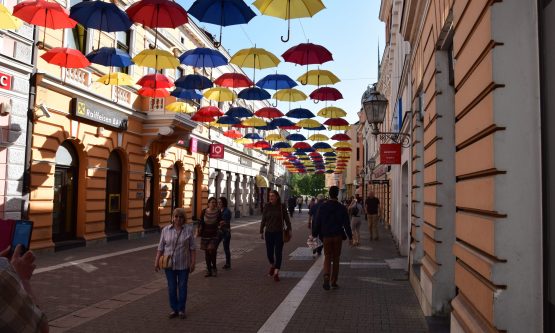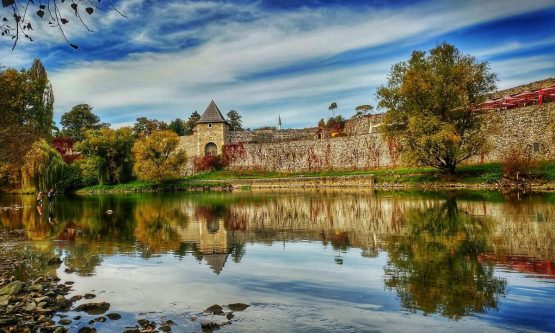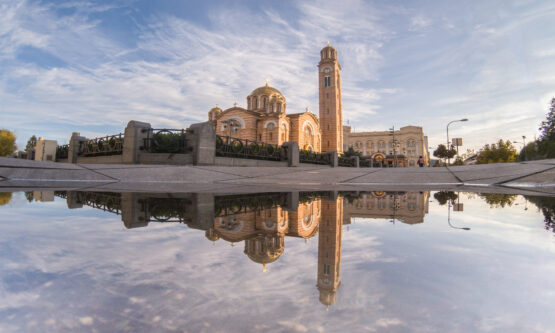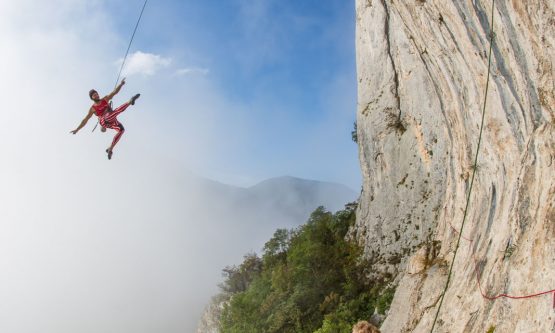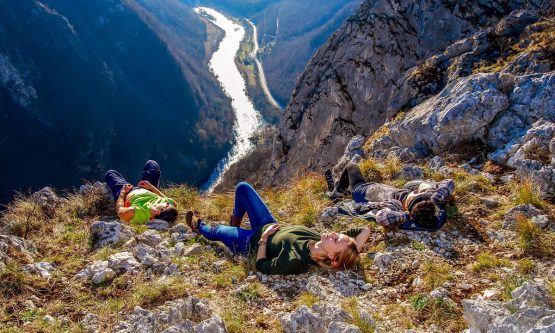Welcome to Banja Luka
Banja Luka is the biggest city and a university and administrative center of Republic of Srpska. In Banja Luka you can feel the spirit of various cultures that have been intertwining in this area and visit a significant number of cultural-historical monuments, that stand as witnesses to different epochs of human creativity. Especially proudly in the city center stands the fortress of Kastel. These old defensive walls present historical city core and a place of Banja Luka’s foundation.
By taking a route from Kastel fortress to National Theater through Gospodska street, you will pass by Banski Dvor, City Hall, monument of Ban Milosavljevic and President’s Palace, and with an inevitable short break in Petar Kocic park, you experience the true spirit of Banja Luka’s culture, tradition and hospitality.
Restless and lively spirit of people is mirrored by Vrbas river, whose fast currents and waterfalls are tamed by kayakers in kayaks and Dajak boats and rafts. This green beauty with its banks is a beating heart of Banja Luka. A special kind of boat that can be seen on this river is called “Dajak”, giving Vrbas a unique attractiveness. Dajak was named after a long pole that is used for navigating by pushing it against the river’s rocky bottom.
Banja Luka is also a city of festivals. They showcase what’s best in music, movies, theater, literature, gastronomy…
Banja Luka tales and legends along with its fabulous nightlife will make your stay in this city an unforgettable experience.
Culture
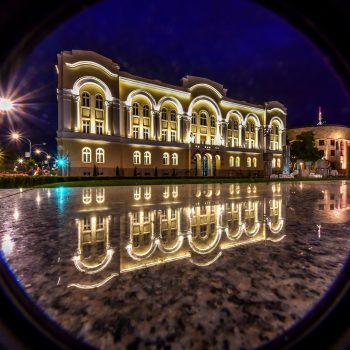
The old walls of Kastel fortress, but also the remains of medieval fortified cities of Zvecaj, Greben and Bocas are here to provoke our interest in the history of this city and to tell stories of battles, trades and rise and fall of the fortress itself. These places are the origins of the most important settlements in the city vicinity. The walls once risen to protect the lives of people now protect culture and tradition.
Among other cultural institutions are also Cultural Center Banski Dvor, National and Children’s Theater, Museum of Republic of Srpska, Museum of Contemporary Art, along with various galleries and cultural events that are held throughout the entire year.
Just like the whole Balkan area, the Vrbas beauty is a melting pot of western and eastern civilization, making Banja Luka a city with different religious communities and their temples. Especially significant are Christ the Savior church, Ferhat Pasha mosque and the cathedral of Saint Bonaventure. All are located in the very city center, not far apart from each other.
Nature
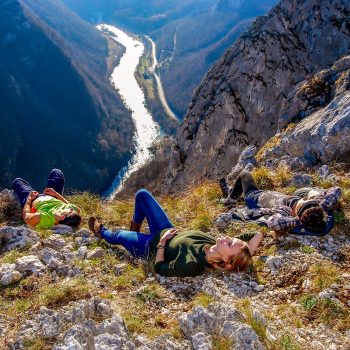
Travel writers that visited this area often called Banja Luka “paradise valley” due to its greenery and water. The most common trees here are wild chestnuts, together with lindens, planes, spruces and various types of decorative plants.
With its natural abundance, the city’s vicinity is very appealing, especially Vrbas canyon and plateau of Manjaca mountain, 12 kilometers away from the city.
Among these attractions, there are also various wonderful getaways, camp sites, canyons, interestingly shaped rocks, beautiful springs, etc.
In the city’s near vicinity there are three hot springs of geothermal water (Srpske Toplice, Slatina and Laktasi). Their healing powers have been used for centuries ever since the ancient times. Besides the geothermal spring, Srpske Toplice is also famous for the natural habitat of Southern Maidenhear Fern (Adiantum capillus-veneris), a living tertiary fossil which is very rare in the continental part of Europe.
Adventure
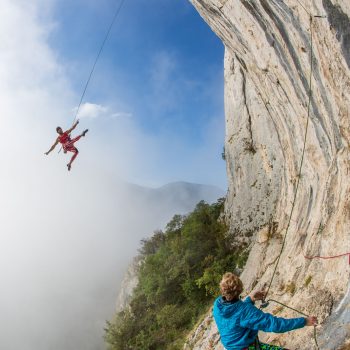
The adventurous spirit of Vrbas river, together with other natural elements, are ideal for adrenaline tourism. All types are present:
- Adventure on water, canoeing, kayaking and dajak
- Adventure on land: free climbing, mountain biking, hiking, quad rides
- Adventure in air: paragliding and parachuting
Gastro
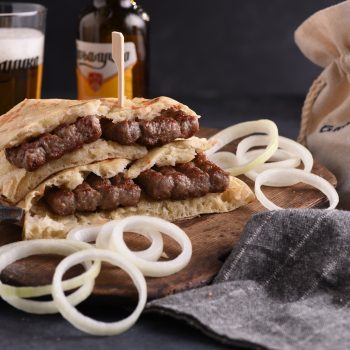
It is not easy to accustom a visitor to the secrets of domestic gastronomy. Many dishes cannot be found neither in dictionaries nor in menus of other nations, although they are made of ingredients that can be found in every European country.
Trappista cheese from the Banja Luka convent with a tradition of over 130 years and a secret recipe, uniquely shaped “Banja Luka cevap” (kebab), with a completely different taste than others and Nektar beer, the winner of Golden Quality prize by the International Quality Institute in Brussels – if you don’t taste all these delicacies, the visit to Banja Luka will not count.
Tourist organization of Banja Luka
Kastel fortress
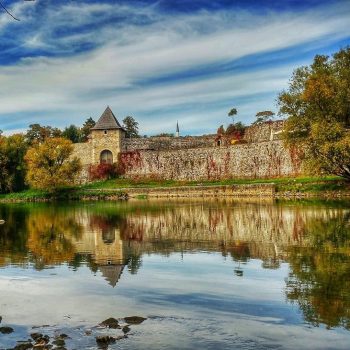
Proud defensive walls, the place where it all started a couple of centuries ago. The fortress on the river bank has been a pillar of city’s development throughout the historical epochs, and today, along with Vrbas river, presents a must-see sight on the tourist map.
Gospodska street

We can say that this is a beating heart of Banja Luka. The most famous Banja Luka promenade actually has two names, an official one – Veselin Maslesa street, and the other one which is more common for people – Gospodska street. The history says that famous Banja Luka merchant Toma Radulovic was the first one who got a permission to open a store. He built a one-story building in 1885 and named it Albania. Soon he got tired of peasants coming to his store to spend very little money, so he took an initiative and wrote “Gospodska” (Gentleman) street on one of the walls. It happened shortly before the Austro-Hungarian army occupied the city, and they accepted the street’s name, calling it officially “Herrengasse” until 1918. The new name stuck, first on Austrian postcards that said Herrengasse, but soon in the everyday life of locals.
Orthodox church of Christ the Savior
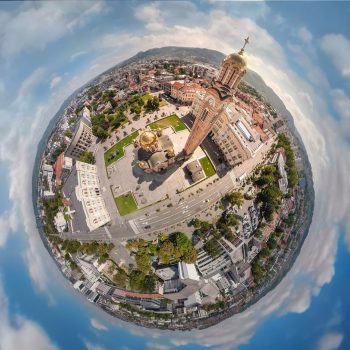
The church of Christ the Savior is considered one of the grandest and most beautiful architectural works among the orthodox temples in the Balkans. It was built on foundations of “Holy Trinity” church from 1919 as one of the largest construction projects in Banja Luka after World War I. Unfortunately, it was destroyed during the Nazi bombing of Banja Luka in 1941.
Ferhadija mosk
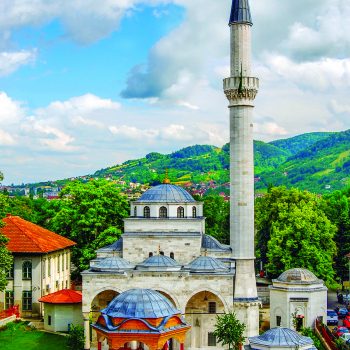
It was built in 1579 as one of the most valuable cultural-historical monuments of Oriental architecture in Bosnia and Herzegovina, inspired by the legacy of the famous Turkish architect Sinan.
Mariastern Abbey
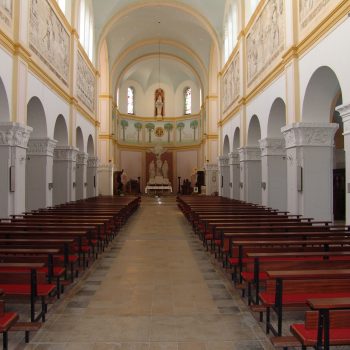
Mariastern Abbey
Trappist monastery (Mariastern abbey) in Banja Luka has left an invaluable mark through the history of the city on Vrbas. Trappista cheese, first power plant, brewery, bridge on Vrbas, first hospital and higher education institution, elementary and trade schools are the reasons that Banja Luka people will never forget the Trappist monks. The monastery church has been a county church for 30 years now and is a unique one in Bosnia and Herzegovina.
Rafting

Vrbas is a fast mountain river with a couple of wild foamy parts and quick falls. It is considered one of the most attractive 3-4th difficulty level rivers in Europe. Vrbas flows through two canyons – Tijesno (5km) and Podmilacje (8km). Distance used for adventure water sports is 31km long (from Bocac dam to the city center).
The international difficulty classification is 3-4th level, but on some routes it is 1-2, which combines the possibility of wild adventure and adrenaline rush with peaceful family enjoyment in all activities.
“Vrbas Adventure Resort” provides an infrastructure for enjoying night rides through fast currents and waterfalls. It is also famous for organizing quality competitions such as state, Balkans, European and World championships and cups in kayak-canoeing and rafting. Vrbas Adventure Resort was the host of World Rafting Championship in 2009. Vrbas is one of the few rivers in the world that can accommodate conditions for all disciplines in this sport. All this is more than enough reason to enjoy its crystal clear emerald water.
Touristic rafting tours on Vrbas are possible during the entire year, but it is best to go in spring or summer.
Rafting Center Kanjon is located on the Vrbas river bank, 11km away from the Banja Luka ciy center. Experienced skippers will provide you with an unforgettable adventure on the river Vrbas, which, according to World Rafting Federation, meets all competition conditions in all disciplines. There is also a restaurant here, together with two summer patios where unforgettable parties are organized during the summer season.
Krupa na Vrbasu
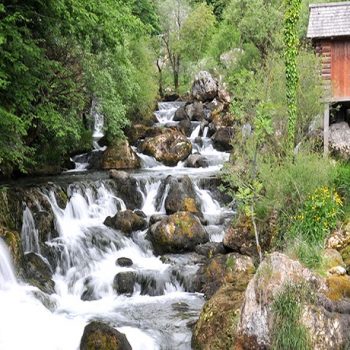
The springs of Krupa, waterfalls, mills, Strika’s cave, wooden church from 16th century and medieval town Greben (from 1192) are only a few landmarks of this getaway that is around 25km away from Banja Luka. Practitioners of religious tourism will find their peace in the monastery of St. Elijah by taking a footpath through the forest.
Ljubačke doline
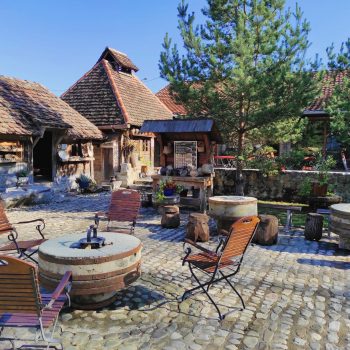
Ethno village “Ljubačke doline” is around 30km away from Banja Luka. It is an ecological oasis extending onto 2 hectares of land, comprised of 30 authentic objects from the nearby villages dating from late 19th and early 20th century. The prettiest view on Vrbas river canyon “Tijesno” you can experience is from the village Ljubačevo.
The gondola of Banja Luka – Dajak, the king of Vrbas
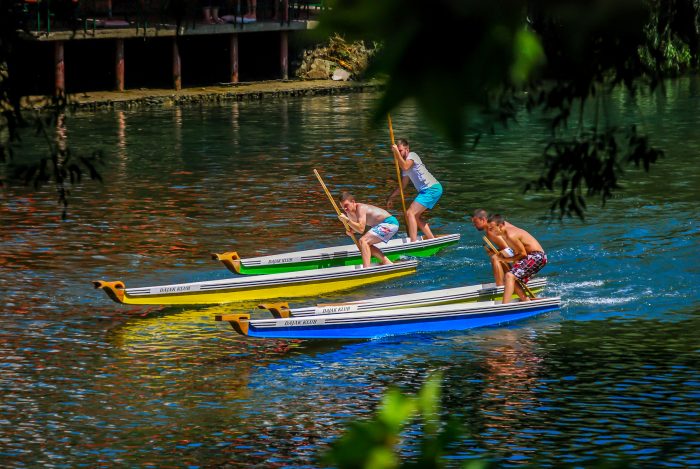 Dajak is 7 meters long and it is built from the highest quality fir wood with symmetrical rings. The most recognizable details are stern and front, made from a single piece of wood. The front part of the boat is its most distinctive attribute. It is similar to a mythical creature, tame or wild, embodying the art vision of its craftsman, so each boat has a unique front end. Take advantage of this special chance to get to know the city on the river, with experienced dajak navigators.
Dajak is 7 meters long and it is built from the highest quality fir wood with symmetrical rings. The most recognizable details are stern and front, made from a single piece of wood. The front part of the boat is its most distinctive attribute. It is similar to a mythical creature, tame or wild, embodying the art vision of its craftsman, so each boat has a unique front end. Take advantage of this special chance to get to know the city on the river, with experienced dajak navigators.





